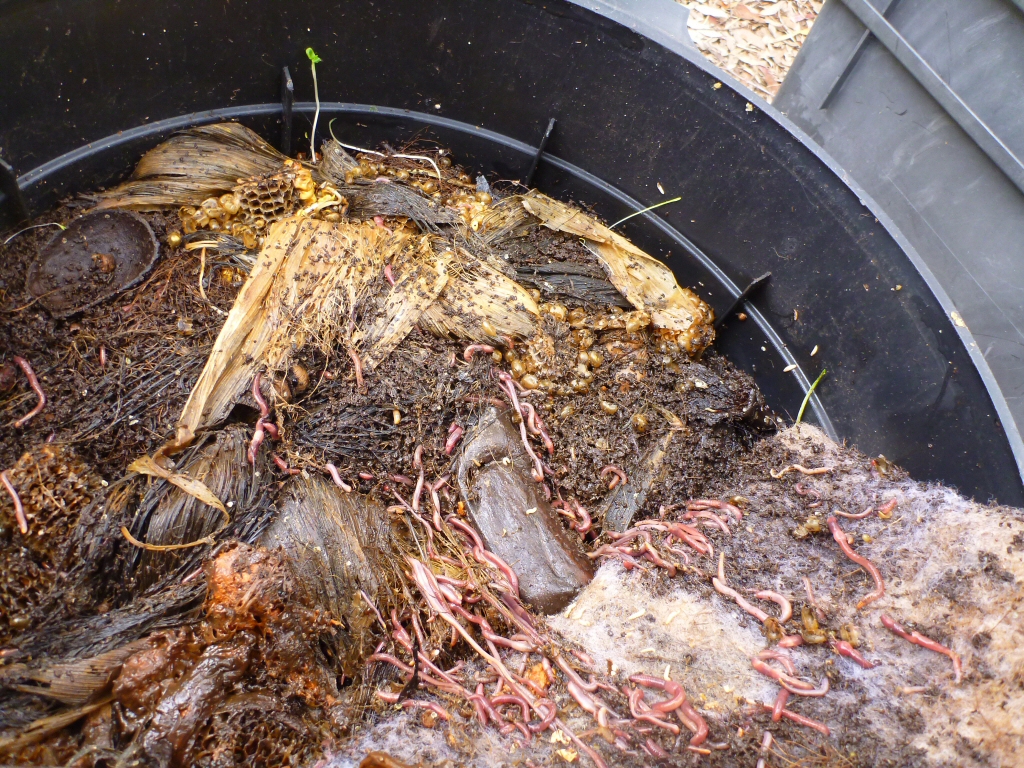If you feel a twinge of guilt every time you throw those organic materials such as vegetable peelings into the bin then it is time to consider starting a worm farm. Anything organic can be put into a worm farm, however, it is important not to drown the worms with too much ‘wet’ kitchen waste, as they need oxygen to really thrive. Therefore it is a good idea to mix some dry material such as shredded paper, corrugated cardboard (newsprint is OK in moderate amounts), cow and horse manure, or straw in with the mix to allow for adequate aeration. Another important point is to feed small amounts of material every day or two as this allows the worm population to fluctuate to match the volume of material you are adding. Also keep your worm farm in a sheltered shady spot as the heat of a scorching summer day will damage your worms if the farm is in full sun.
Commercially available worm farms usually consist of a series of stackable trays that house the worms and organic material they are eating, with a tray underneath to catch the liquid they produce. This ‘worm tea’ is one of the wonderful byproducts of vermiculture as it is a well-balanced, free organic liquid fertiliser that is particularly good for feeding your pot plants and vegetable garden. As it is important to keep the worm farm moist with regular applications of water, you will get a wonderful regular supply of worm tea, which is good for foliar and root feeding. From time to time a light dusting of lime is beneficial, as worm castings tend to become quite acidic. A light sprinkle of flour will feed the breeding worms too, but make sure to water after both the lime and flour are applied.
There are commercially available worm blankets to put on top of the worm bed, and these help enormously. They will keep the farm moist and worms love to congregate under them to feed on fresh additions. You can make your own with an old cotton towel. Any non synthetic fabric like cotton and wool will work too, so old t-shirts, blankets etc can be recycled through your worm farm to rot down and also become food for the worms and then your garden!
As well as the liquid they generate the worms also produce solid castings that can be harvested on a regular basis from the bottom tray and these can be dug into your garden soil or mixed in small amounts into potting mixes for your container plants. There are many videos on Youtube that will help you learn how to make a home made worm farm or teach you to drive a commercial unit. Check out my own instructional videos on worm farming on AngusStewartGardenTV-
Harvesting worm castings from your worm farm
Can you add citrus peel and onion skin to a worm farm?
An in ground worm farm
Another worm farming option is the in ground type that allows worms to move in and out of the soil below ground level. This allows them to deposit their castings straight into the soil rather than you having to clean out the containers of an above ground worm farm.
Buy the in-ground Worm Feast worm farm online here >>>>
Worm farming or vermicomposting, which utilises earthworms to do the dirty work, is an odour-free (if operated correctly) method of composting your kitchen wastes. It is also a wonderfully interactive way to teach children about recycling and give them a sense of responsibility if they are given the task of caring for these low maintenance household pets. There are all sorts of different types of worm farms from ones that you construct yourself, to well designed kits that you can purchase from your local garden retailer or online, which are made to be easy to use and neat and tidy.








